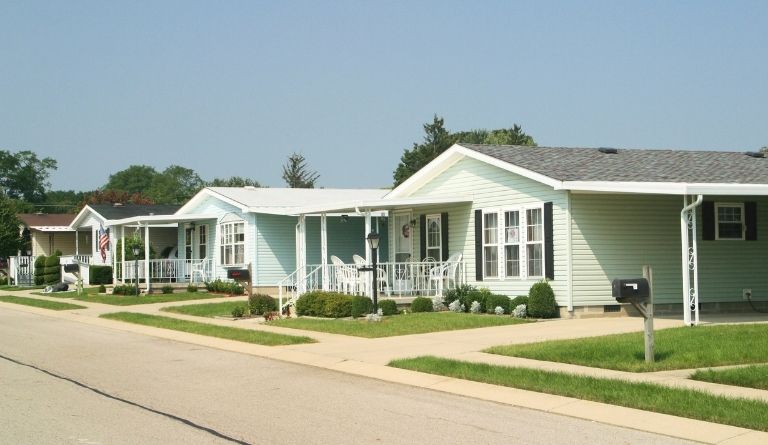Industries // Real Estate, Architecture
Everything You Need to Know About Modular Homes in Connecticut
Support Team // April 9, 2025 // 6 min read

With growing families, there will be a point in our lives when we face the dilemma of whether renovating or moving to a new home. Renovations might make a house look out of place compared to the other homes in the neighborhood, and right now, the housing market is hard to predict and very competitive.
Dreaming of a new home in Connecticut but tired of the high costs and long construction timelines of traditional homes? Modular homes might be the solution you’ve been looking for. Modular homes in Connecticut are becoming more than just a trend—they’re reshaping the way people think about homebuilding.
Whether you’re a first-time buyer, a growing family, or someone looking to downsize, modular homes offer a smart, modern, and affordable way to live in the Constitution State. Explore the key reasons behind the growing interest in modular homes in Connecticut.
What Are Modular Homes?
You may have heard terms like modular homes, prefab homes, or factory-built homes before, it’s what people like to call it. A modular home is built in sections (called modules) inside a factory with 80-90% completion. These sections are then transported to a home site and put together like puzzle pieces. This is different from manufactured homes (mobile homes), which are built to a different code and typically not placed on permanent foundations. It also differs from stick-built homes, which are constructed entirely on-site, piece by piece.
Facts about Modular Homes
Modular homes are valued the same as traditional, on-site built homes and do not lose value over time. They offer customization options, with many builders using CAD (Computer-Aided Design) for precise planning. These homes come in a variety of styles and sizes and can even be used for commercial purposes, such as office buildings.
Modular homes are permanent structures considered real property and can be placed on crawl spaces or basements. They are also eco-friendly and often built with green materials. The construction of modular homes is faster compared to fully site-built homes.
Additionally, home loans, insurance premiums, and taxes for modular homes are the same as for traditional homes. They are also designed to withstand strong winds (up to 175 mph) and can be built with features for accessibility and future needs.
Modular Homes vs Manufactured Homes
Although these two are pre-built in factories, it’s a common misconception that they are the same. They vary as manufactured homes are mobile, but Modular Homes aren’t. Metal wiring in modular homes is generally permanent, as the fixtures are not designed for mobility and lack the necessary attachments for relocation. In contrast, manufactured homes are specifically built with features that allow for relocation if needed.
Pros and Cons of a Modular Home
Pros
- Higher Costs of Traditional Homes:
Prices for materials and labor keep going up, especially in popular areas like Fairfield County and Hartford. Modular homes cost less, so you can use the extra money to buy furniture and decorate your home. - Faster Construction:
Weather in Connecticut can slow down traditional builds, but factory-built homes avoid those delays. - Customization:
Buyers can choose floor plans, finishes, and even smart features. - Energy Efficient:
Modular homes generally have tighter seams and a more solid construction than many stick-built structures. This kind of sealed building helps to lower your heating and cooling expenses.
According to local builders like CT Valley Homes and Segalla’s Turnkey Housing LLC, interest in prefab homes has surged in recent years. As housing prices go up and more people look for new homes, Connecticut residents are considering modular homes.
Cons:
- Zoning laws:
Not all areas allow modular homes. Some places have rules that limit where you can build them. - Weather concerns:
In areas with extreme weather (like hurricanes in Florida), modular homes might not be the best choice compared to stronger structures like concrete block homes. - Utility setup challenges:
It can be difficult to arrange utilities for prefab homes. You’ll need to connect to city water or find a well for water supply. Better look for prefab homes where the company can handle these details for you.
Modern Design Trends in Modular Homes
Today’s homebuyers are looking for modern, stylish, and practical living spaces, which is why trends in modular home, tiny home, and manufactured home designs keep evolving.
Popular Modular Home Design Trends
- Open Floor Plans & Large Windows:
Great for families and entertaining guests for natural light and viewing Connecticut’s beautiful landscapes. - Smart Home Features & Large Windows:
Automated lights, locks, thermostats, and more. Many Connecticut modular homes can be built with solar panels and rainwater collection systems. - Sustainable Materials:
Many modular builders use eco-friendly materials Bamboo floors, recycled steel, and low-VOC paints are commonly used.
Modular Home Furnishing
- Semi Open-Concept Layouts:
Homeowners are using simple room dividers and smart lighting to create separate areas within modular homes. Modular home office furniture is also added for working remotely in the comfort of your home. - Multipurpose Furniture:
Designed to save space and provide flexibility for small spaces typically by integrating features such as hidden compartments, flexible setups, or convertible options.
- Modular Furniture:
Separate pieces of furniture are combined to create a complete design. This offers endless options for comfort, style, and safety, as the furniture can be arranged in many different ways.
- Luxury Bathroom Experience:
Elements like rainfall showers, floating vanities, and smart mirrors offer a high-end feel while keeping costs manageable.
Some homeowners in Connecticut are choosing modular designs that combine practicality and style, moving away from basic, standard homes. The state is also encouraging green buildings through incentives and programs.
Popular Areas for Modular Homes in Connecticut
Wondering where you can build a modular home in the state? Here are some hot spots:
- Fairfield County:
Great for commuters heading to New York City. Think luxury modular homes with quick timelines. - Hartford Suburbs:
More affordable land options and strong communities make this ideal for families. - Coastal Connecticut:
Modular beach-style homes are perfect for areas along the Long Island Sound, with designs to withstand weather and maximize ocean views.
Remember, when choosing a location, always check local zoning rules. Some locations may have specific regulations or guidelines about modular home construction.
How to Get Started with Modular Homes in Connecticut
Ready to explore modular homes? Here’s how to begin:
- Secure Your Land:
Pick a lot that’s zoned for residential use and suitable for modular construction. - Choose a Builder:
Work with experienced Connecticut modular home builders like CT Valley Homes, Segalla’s, or Westchester Modular Homes. - Customize Your Home:
Select your floor plan, finishes, and smart features. - Handle Permits and Prep:
Your builder will help with permits, inspections, and preparing the land. - Build and Deliver:
Modules are built in a factory, shipped to your site, and assembled in days.
Tip: Always ask for references, check reviews, and make sure your builder is licensed and insured.
FAQs:
Can you build a modular home in Connecticut?
Yes, you can build a modular home in Connecticut, and it’s a popular and viable option for new construction, with manufacturers letting you decide your dream home and have it delivered to you in a short period of time depending on the features you want.
How much does a 2000 sq ft modular home cost?
For this dimension, a price estimate from HomeGuide reveals that the total finished cost ranges from $160,000 to $300,000. When considering modular homes, it’s important to compare different companies, as they can vary greatly in terms of quality, price, and service.
What is the downside of modular homes?
Modular homes may face challenges with zoning laws, as not all areas allow them. In regions with extreme weather, they might not be as durable as other structures. Additionally, utility setup can be more complicated, requiring connections to city water or wells, so it’s best to choose a company that handles these details.
How long do modular homes last?
Modular homes are built to last for many years, typically over 50 years. With proper materials, design, and maintenance, some can even last up to 100 years.
Furnishing Your Modular Home in Connecticut? Get secure temporary storage, professional decor and furniture delivery, expert installation, and assembly services. Contact us now for an instant quote!

A complete end-to-end logistics company. From receiving to last-mile delivery and everything in between, our staff delivers a true white glove experience with meticulous care and attention to detail. Need something pickup up, crated, and delivered - anywhere in the world? Let's get started!

